
- Shandong Loyal Industrial Co.,Ltd.
- Macaroni Production Machine Instant Noodle Machine Biscuit Making Machine
Home> Company News> The Ultimate Guide To snack food extrusion Updated 2024

The Ultimate Guide To snack food extrusion Updated 2024
2025-02-11 10:16:01Overview of Snack Food Extrusion Technology
Snack food extrusion technology has revolutionized the way snack foods are produced, offering manufacturers a versatile and efficient means to create a wide array of textures, shapes, and flavors. This technology involves the use of extruders, which are machines that apply pressure and shear forces to a mixture of ingredients to force them through a die, thereby shaping and forming the snack product.
The process of snack food extrusion begins with the preparation of the ingredients, which can include cereals, grains, nuts, seeds, and various additives such as flavors, colors, and nutrients. These ingredients are mixed together to form a homogeneous mass, which is then fed into the extruder. Inside the extruder, the mixture is subjected to high pressure and temperature, causing the ingredients to undergo physical and chemical changes that result in the desired texture and shape of the snack.
One of the key advantages of snack food extrusion technology is its ability to produce a wide range of snack products with varying textures and shapes. By adjusting the parameters of the extrusion process, such as the screw speed, temperature, and die configuration, manufacturers can create snacks with different crispiness levels, hardness, and mouthfeel. This versatility allows for the production of snacks that cater to diverse consumer preferences and dietary needs.
Moreover, snack food extrusion technology offers several benefits in terms of efficiency and sustainability. The process is highly automated, reducing labor costs and increasing production capacity. Additionally, extruders can be designed to use renewable energy sources, such as steam or electricity generated from biomass, further enhancing their environmental footprint.
In recent years, there has been a significant increase in research and development activities focused on improving snack food extrusion technology. Innovations in ingredient formulation, process control, and equipment design have led to the development of new snack products with enhanced nutritional profiles and sensory attributes. For instance, the use of functional ingredients, such as dietary fibers and probiotics, has become increasingly popular in the production of healthy snacks.
In conclusion, snack food extrusion technology is a powerful tool for the production of innovative and diverse snack products. With its ability to create a wide range of textures and shapes, as well as its benefits in terms of efficiency and sustainability, this technology is poised to continue playing a significant role in the snack food industry. As research and development activities continue to advance, we can expect to see even more exciting innovations in snack food extrusion technology in the future.

Current Trends in Snack Food Extrusion
The snack food industry is constantly evolving, driven by consumer demands for healthier, more convenient, and innovative products. Snack food extrusion technology, as a key manufacturing process, is also evolving to meet these demands. In this section, we will explore the current trends in snack food extrusion that are shaping the industry.
1. Emphasis on Health and Wellness
One of the most significant trends in snack food extrusion is the emphasis on health and wellness. Consumers are increasingly seeking snacks that are low in calories, high in fiber, and free from artificial ingredients. To meet these demands, snack manufacturers are using extrusion technology to create snacks made from whole grains, nuts, seeds, and other nutritious ingredients. For instance, the use of high-fiber cereals and legumes in extrusion processes can result in snacks with improved dietary fiber content, which is beneficial for digestion and overall health.
Moreover, snack food extrusion technology allows for the incorporation of functional ingredients, such as probiotics, antioxidants, and vitamins, into snack products. These functional ingredients can provide additional health benefits, such as improved gut health, immune support, and energy boost.
2. Sustainable Production Practices
Sustainability is another key trend in snack food extrusion. Manufacturers are increasingly adopting eco-friendly production practices to reduce their carbon footprint and minimize waste. This includes using renewable energy sources, such as solar and wind power, to operate extrusion equipment. Additionally, snack manufacturers are exploring ways to reduce the amount of water and energy used in the extrusion process, as well as to minimize waste through recycling and composting initiatives.
Furthermore, the use of plant-based ingredients in snack food extrusion is becoming more popular, as they are often more sustainable than animal-based products. For example, snack manufacturers are using extruded vegetable proteins to create meat-like textures in plant-based snacks, which can help reduce the environmental impact of traditional meat production.
3. Advanced Process Control and Automation
Advancements in process control and automation are also driving innovations in snack food extrusion. Manufacturers are using sophisticated sensors and control systems to monitor and optimize the extrusion process in real-time. This allows for more precise control over the texture, shape, and nutritional profile of the final snack product.
Moreover, the integration of artificial intelligence (AI) and machine learning algorithms is enabling snack manufacturers to predict and optimize the extrusion process based on historical data and consumer preferences. This can lead to more efficient production, reduced waste, and improved product quality.
In conclusion, the current trends in snack food extrusion are shaping the future of the snack food industry. The emphasis on health and wellness, sustainable production practices, and advanced process control and automation are all driving innovations that will lead to the development of new and exciting snack products that meet the diverse needs and preferences of consumers. As these trends continue to evolve, we can expect to see even more exciting developments in snack food extrusion technology in the future.

Environmental and Sustainability Considerations
Environmental and sustainability considerations are crucial in various aspects of life, including project planning, business operations, and even daily activities. These considerations aim to minimize negative impacts on the environment and promote sustainable practices. Below is a detailed discussion on environmental and sustainability considerations.
1.Importance of Environmental and Sustainability Considerations
The importance of these considerations stems from the increasing awareness of the environmental challenges faced globally, such as climate change, pollution, and resource depletion. By integrating environmental and sustainability considerations into various aspects of life, individuals and organizations can contribute to protecting the environment and ensuring a sustainable future.
2.Key Areas for Environmental and Sustainability Considerations
①Project Planning and Construction
|
Site Selection and Design |
When planning a project, such as the construction of a new facility or the renovation of an existing one, it is essential to consider the environmental impacts of the site selection and design. This includes assessing the site's location, access, size, shape, and orientation to ensure they align with short, medium, and long-term plans. |
|
Sustainable Materials and Practices |
The use of recyclable materials and sustainable practices should be prioritized during the design and construction phases. This can include energy-efficient facilities, the use of renewable energy options, and less impactful delivery and operational strategies. |
|
Multi-use Facilities |
Considering the demand for multi-use facilities can enhance the sustainability of a project. For example, a rugby pitch can be designed to accommodate other sports, thereby maximizing its use and reducing the need for additional facilities. |
②Business Operations
|
Energy Consumption |
Businesses should strive to reduce their energy consumption by adopting energy-efficient technologies and practices. This can include using LED lighting, optimizing HVAC systems, and implementing smart building technologies. |
|
Waste Management |
Effective waste management is crucial for businesses. This includes reducing waste generation, recycling, and properly disposing of hazardous materials. |
|
Supply Chain Management |
Businesses should prioritize working with suppliers who share their commitment to sustainability. This can include sourcing materials from environmentally responsible suppliers and collaborating with partners to reduce the environmental footprint of the supply chain. |
③Daily Activities
|
Resource Conservation |
Individuals can contribute to sustainability by conserving resources such as water and energy. This can include turning off lights when not in use, using water-saving fixtures, and reducing paper consumption. |
|
Transportation |
Choosing sustainable transportation options, such as walking, biking, carpooling, or using public transportation, can reduce greenhouse gas emissions and contribute to a healthier environment. |
|
Consumer Choices |
Consumers can make sustainable choices by purchasing products from companies that prioritize environmental responsibility. This can include selecting products with minimal packaging, buying locally sourced food, and supporting companies with strong sustainability commitments. |
- Benefits of Environmental and Sustainability Considerations
|
Environmental Protection |
By minimizing negative impacts on the environment, individuals and organizations can contribute to protecting natural resources and biodiversity. |
|
Economic Benefits |
Sustainable practices can lead to cost savings through energy efficiency, waste reduction, and resource conservation. Additionally, businesses can differentiate themselves in the market by prioritizing sustainability and attracting consumers who value environmentally responsible companies. |
|
Social Benefits |
Sustainable practices can improve public health and well-being by reducing pollution and promoting healthier living environments. They can also contribute to social equity by ensuring that resources are available to all members of society. |
Conclusion
Environmental and sustainability considerations are essential for protecting the environment, promoting sustainable practices, and ensuring a sustainable future. By integrating these considerations into various aspects of life, individuals and organizations can contribute to a healthier, more prosperous, and more equitable world.
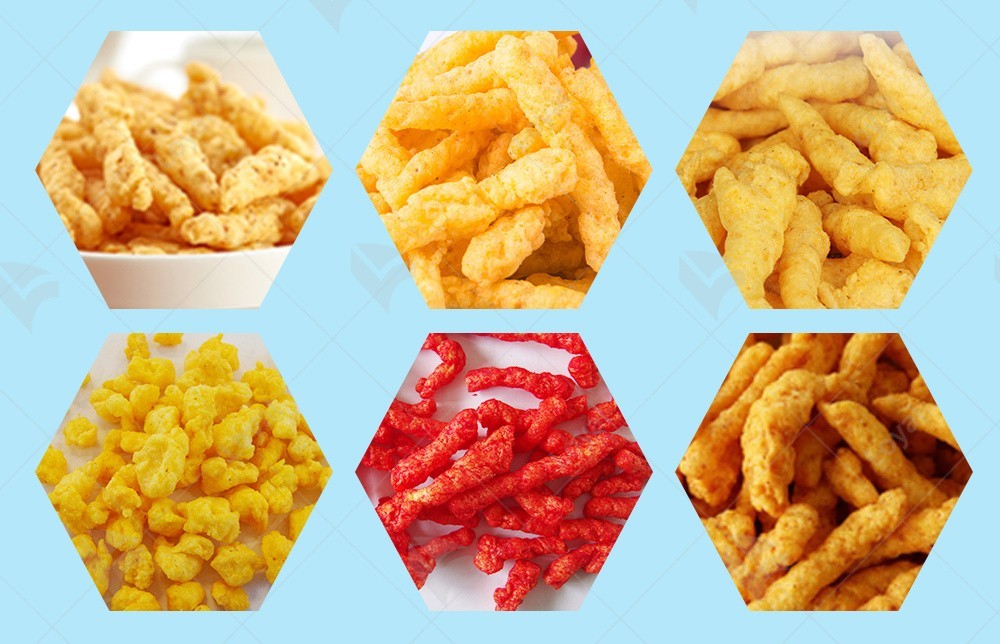
Challenges and Future Directions
The snack food extrusion industry is a dynamic and rapidly evolving sector, driven by continuous innovations aimed at enhancing product quality, efficiency, and sustainability. However, despite these advancements, the industry faces several challenges that necessitate ongoing research and development. This section delves into the key challenges faced by the snack food extrusion industry and explores potential future directions for innovation.
1.Technical Challenges
One of the primary challenges in snack food extrusion technology is achieving the optimal balance between product quality and production efficiency. Extrusion processes involve numerous variables, such as temperature, pressure, screw design, and ingredient formulation, which can significantly influence the final product's texture, taste, and nutritional profile. Ensuring consistent product quality while maintaining high production throughput remains a complex task.
Moreover, the demand for customized and novel snack food products is growing, placing additional pressure on manufacturers to innovate and differentiate their offerings. This requires ongoing research into new extrusion technologies and ingredient combinations that can deliver unique textures, flavors, and health benefits.
2.Sustainability Challenges
Sustainability is another significant challenge facing the snack food extrusion industry. The production of snack foods often involves substantial energy consumption, water usage, and waste generation. As consumers become increasingly environmentally conscious, manufacturers are under pressure to adopt more sustainable practices throughout their supply chains.
Addressing these sustainability challenges requires a multifaceted approach, including the development of energy-efficient extrusion machinery, the use of biodegradable and compostable packaging materials, and the sourcing of sustainable ingredients. Additionally, manufacturers must prioritize waste reduction and recycling initiatives to minimize their environmental footprint.
3.Regulatory and Compliance Challenges
The snack food extrusion industry is subject to various regulatory requirements and standards, which can vary significantly across different regions and countries. Ensuring compliance with these regulations can be a complex and costly process for manufacturers.
As the industry continues to evolve, new regulations and standards may emerge, necessitating ongoing updates to production processes and ingredient formulations. Keeping abreast of these changes and ensuring compliance can be a significant challenge, particularly for smaller manufacturers with limited resources.
4.Future Directions for Innovation
Despite these challenges, the snack food extrusion industry remains poised for significant innovation and growth. One potential direction for future innovation is the development of more advanced extrusion technologies that can deliver highly customized and novel snack food products. For instance, the use of precision extrusion technologies, such as 3D printing, could enable manufacturers to create intricate and personalized snack designs that cater to specific consumer preferences.
Additionally, the integration of artificial intelligence (AI) and machine learning algorithms into extrusion processes could lead to more efficient and sustainable production methods. By leveraging data analytics, manufacturers can optimize their production parameters in real-time, reducing waste and enhancing product quality.
Moreover, the trend towards healthier snack options is likely to continue driving innovation in the snack food extrusion industry. Manufacturers will need to develop new ingredient combinations and extrusion technologies that can deliver products with reduced fat, sugar, and sodium content, while maintaining appealing textures and flavors.

Reference
The following are five authoritative foreign literature websites in the field of Industrial food machinery:
1. Food Engineering Magazine
Website: https://www.foodengineeringmag.com/
2.Food Processing Magazine
Website: https://www.foodprocessing.com/
3.Journal of Food Engineering
Website:https://www.journals.elsevier.com/journal-of-food-engineering
4. Food Manufacturing Magazine
Website:https://www.foodmanufacturing.com/
5. International Journal of Food Science & Technology
Website:https://onlinelibrary.wiley.com/
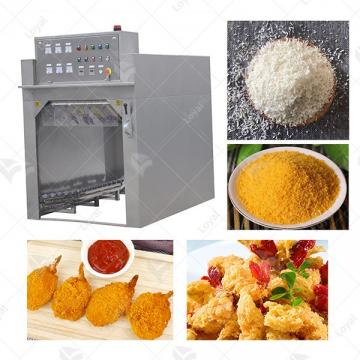 Commercial Japanese Panko Bread Crumb Grinder Machine
Commercial Japanese Panko Bread Crumb Grinder Machine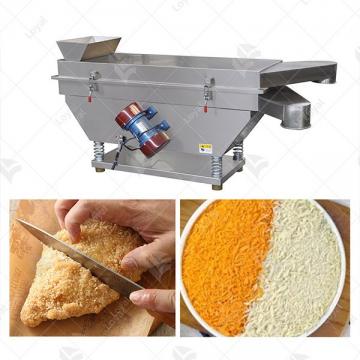 Japanese Bread Crumbs Processing Line
Japanese Bread Crumbs Processing Line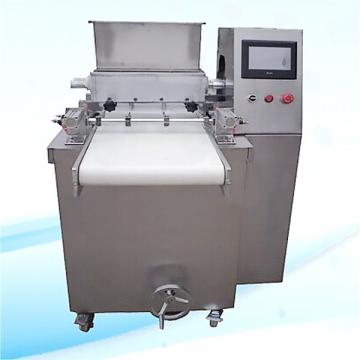 Automatic Cookies Making Machines
Automatic Cookies Making Machines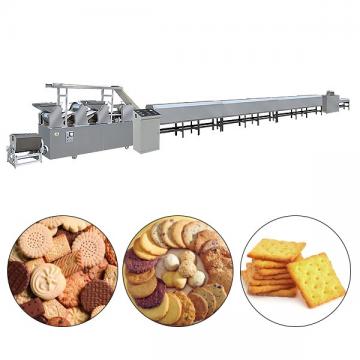 Fully Automatic Biscuit Making Machines
Fully Automatic Biscuit Making Machines